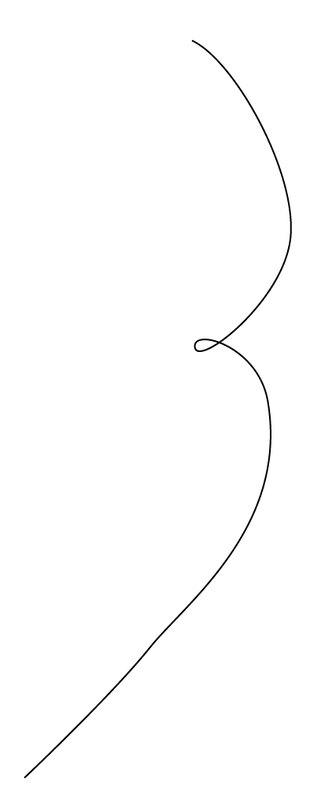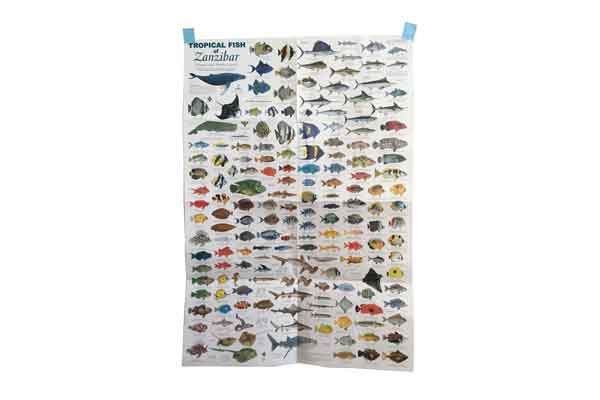There are many stories of how the potato came to be grown around the world. Some stories overlap, many have fuzzy parts, some are told and retold. Subsequent stories elucidate different aspects deemed important in understanding its potato. Yet, despite the multitude of these stories, the potato has become so ubiquitous, as if it has always been here. The following aims to begin the unravelling of the ‘always’ that so often accompanies questions of “how long have you been growing potatoes”, not just in Törbel or in Switzerland, but in most parts of the world where potatoes have become part of everyday diet, through pluralising and multiplying fragments of the potato’s origins, spread, and common use, above and underground.

The potato is said to originate in the Andes mountains, where it was first cultivated, but wild potatoes stretch all across the western Americas, and there are at least two centres of species diversity: one is what is today Peru, and the other in what is today Mexico. (Machida-Hirano 2015)
4000m + papa ruki (known for being frost-resistant)
3500 - 4000m papa puna (known for being hardy)
3812m Lake Titicaca
3000 - 3500m papa maway (known for producing good crops)There are thousands of wild species of potato. About 400 of them were domesticated and cultivated by the people living in the Andes - most households growing perhaps 30 different kinds. About 10 of them contributed to what the potato is today in most of the world.
8 000 000 BCE Geological formation of Andes
15000 BCE First traces of people living in Andes
10000 BCE Wild potatoes eaten from present day Chile to Utah
7800 BCE first evidence of Potato domestication
5000–2000 BCE spread of potato domestication
0 AD Invention of chuño - a methods for preserving potatoes by freezing them in the cold mountain nights and drying them in the day, getting rid of the bitter compounds and significantly extending storage life
500 AD – 1000 AD Tiwanaku (near Lake Titicaca) - first society based on potato cultivation
1438 - 1533 AD Inca empire, for which the potato was central in the alimentation
1536 AD Spanish conquest of Inca empire begins

The wild potato is vastly genetically diverse, and very prone to cross-fertilisation, endlessly producing hybrids. Western scholars still can't quite figure out how to categorise the gene pool of the potato. The potato also has ‘environmental plasticity’, meaning that different environments mean it changes how it grows, how it looks. In general, potatoes need enough cold and enough moisture to form the potato tuber. Cold nights and warm days and regular rain make for good potato growing conditions. Some can withstand high altitudes and cold, and adapt to soils considered poor, such as mountain soils. Some species store longer, some species can withstand frost. Some species are very sensitive to daylight, others are adaptable to different latitudes, to different altitudes.
The wild potato is poisonous - all parts of it are poisonous - and bitter in taste. The people living in the Andes learned to select them for less bitterness, to eat them with a particular type of clay that neutralised the bitter compounds, to dry-freeze over warm days and icy nights, getting rid of those same bitter compounds and producing chuño, which stores longer. In time, potato species were cultivated to reduce the bitterness of the tuber as well as the toxic compounds stored in them, till they were able to be removed completely through cooking.
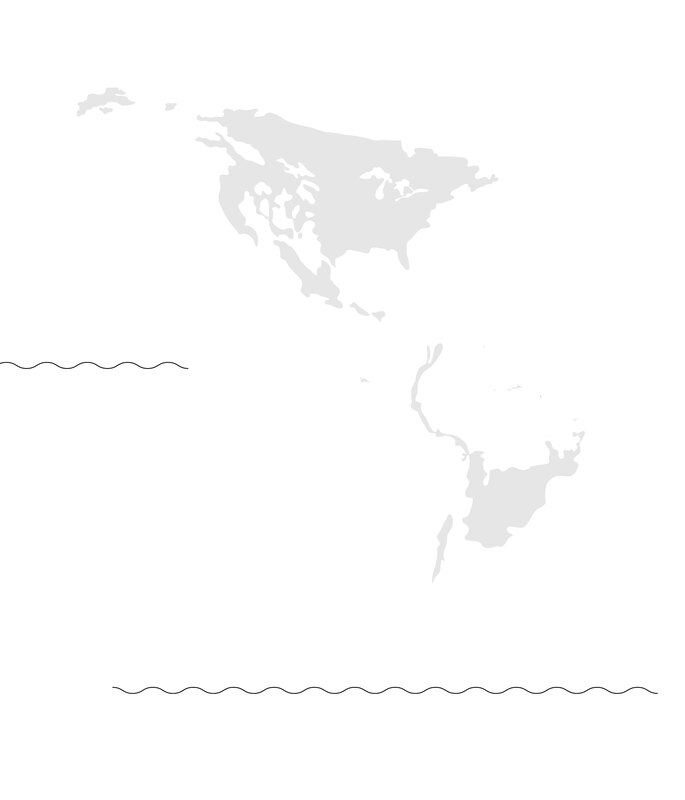
Traditional potato cultivation knowledge is carried to this day by the indigenous communities of the Andes. ‘Parque de la Papa’ (Potato Park) in Cuzco, Peru, a biocultural heritage project initiated by 5 Quechua communities, and working with Associacion ANDES and the International Institute for Environment and Development (IIED). The project seeks alternative modes of development and innovation centre indigenous governance and traditional knowledge for managing local ecosystems and related agricultural biodiversity in the face of climate change

Nutritionally the potato is quite good. It’s very starchy, meaning plenty of calories, but also has sufficient vitamins and minerals to be able to sustain people with just few additions to the diet. In this sense it’s also very productive in terms of the land used, much more so than other staple crops such as grains, maize, rice. Potatoes don't store well in comparison to the other staple foods, they are prone to begin growing or become food for moulds, but their ability to grow in different environments and the nutrition they bring makes them a worthwhile crop.
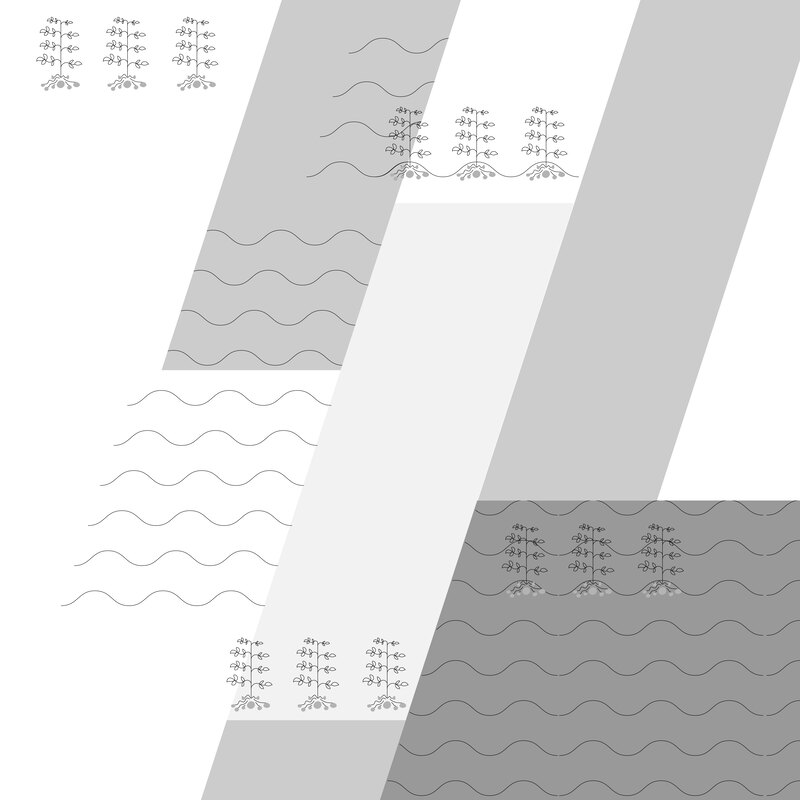
“We order that no one waste maize, nor other foods such as papas, nor peel potatoes because if they had any sense, they would cry when one peels. Do not peel them, on pain of castigation.”
- Felipe Guaman Poma de Ayala (2009 [1615])
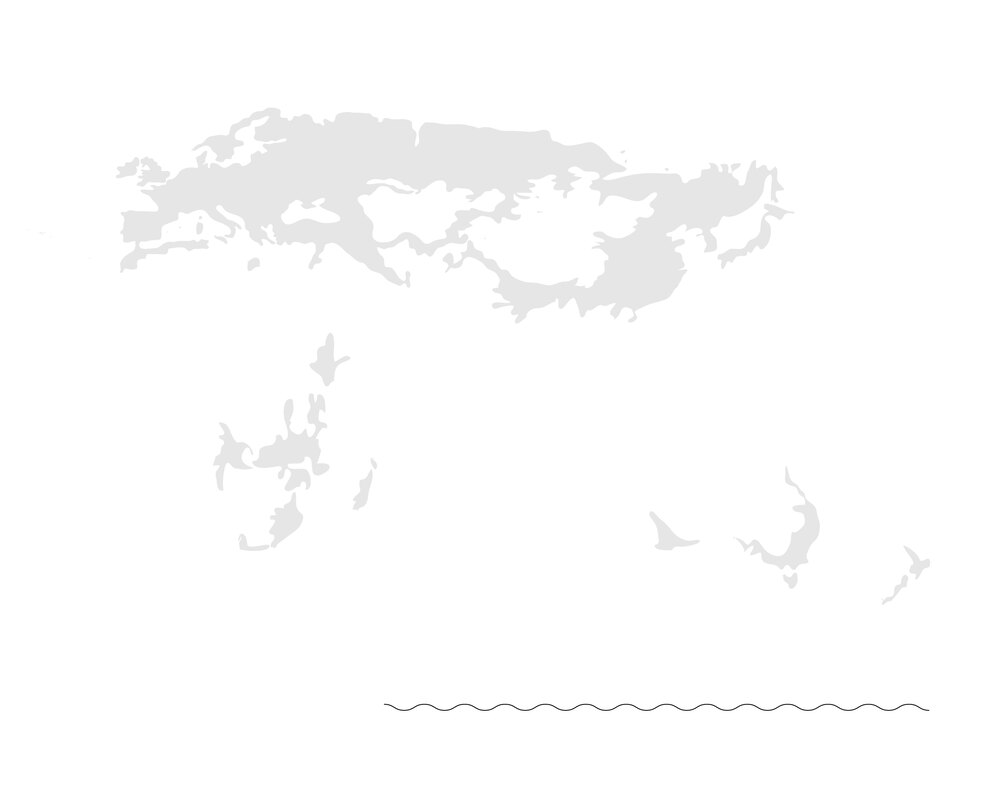
Following the beginning of Spanish colonisation of the Americas, the potato was one of many plant species brought over to Europe. All the while the colonisers sought to replace indigenous crops with those they were familiar with as part of botanical colonialism. This Columbian exchange (see Nunn and Qian 2010) shifted not only what crops were grown where, but also impacted the diets of peasants and farmers. Only a handful of potato species were brought over to Europe, and as the potato and potato cultivation spread worldwide, the rich genetic diversity of the potato was reduced to just a couple of species of Solanum tuberosum - gone was the genetic diversity that protected the Andean potatoes from diseases and pests.

"History celebrates the battlefields whereon we meet our death, but scorns to speak of the ploughed fields whereby we thrive; it knows the names of kings’ bastards but cannot tell us the origin of wheat. This is the way of human folly."
- Jean-Henri Fabre (1823–1915). (Cited in De Jong 2016)

The dates of arrival of potatoes in the rest of the world are often difficult to accurately determine, muddied in the processes that knowledge travels and is reproduced, sometimes clumsily, sometimes to sustain certain narratives, sometimes as it was. Which potato stories were passed on, which were erased or forgotten, what power do they have, and how have they changed?
It is difficult to tell a linear story of the potato’s spread. By most accounts, the process was slow and uneven. At once, it seemed to be everywhere, but also not so popular. Potatoes can grow in areas where other staples could not. They can grow in land that lays fallow after grain cultivation. Potatoes provide so much nutrition for the area of land it took to grow, making their cultivation in marginal spaces a useful supplement to diet, if not a surplus. Yet potatoes also require more work in tilling, in harvesting, and require more work for weeding.
Many of the early records of the potato’s travel come from herbaria and botanical treatises, reflecting detached scientific curiosity of the newly arrived plants from the Americas. Yet among the earliest records of the potato is from a hospital’s records in Seville in 1572 (See Reader 2008 for a detail account of this), where potatoes are simply listed among other purchases for the hospital, suggesting that the potato, already by then, must have been casually grown and consumed by peasants and farmers. Here the nature of records comes to question - how is such history recorded? Which histories are preserved and told again is rarely the same and who grows potatoes. We know little of the informal exchange of plants and seeds. As with western botany, where the stories, exchanges, and interlocutors involved in the gathering of botanical specimens by Europeans were erased with their abstraction into Linnaeus's taxonomies, so the stories of the potato's spread emerge fragmentary, with a couple of points - hospital purchase receipts in, illustrations in herbaria, inventories for trade, etc - to anchor the speculation of its movements.

Non-exhaustive fragments in the potato’s global spread
1562 Canary Islands (Spanish colonisers)
1567 Antwerp
1574 Rouen
1572 Seville
1584 Genoa (Carmelite monks)
1585 Ireland (Basque fishermen)
1596 Basel
1596 England
1596 Swiss botanist Gaspard Bauhin gives the name Solanum tuberosum (“swollen underground stem”) to the potato, which remains in use in western botanical classifications until today
1600s South Africa (Dutch sailors)
1601 Germany
1603 Penghu Islands (Dutch settlers)
1624 Taiwan
1600s China (European traders and Russian traders)
1670s India (Portuguese traders)
1719 New Hampshire (Scottish settlers)
1700 Bangladesh (British colonists)
1769 New Zealand (Captain Cook expedition)
1840s blight epidemic - search for new genetic source of potatoes in Europe - spread of southern Andes (Chilean) potato worldwide
1850s Algeria (French colonists)
1880 East Africa by British (colonial farmers)
…
(see McNeill 1999, Reader 2008, De Jong 2016)

Between these fragmentary dates, what did the potato’s travels make possible? Who experimented its growth, who was surprised to find it grow, who supplemented their diet, who traded it with their neighbours, who traded it along to distant markets? The story of the spread of potatoes is full of misattributions and lacunae. Records are written by record writers, not the fishermen, sailors, and travelling merchants that most likely first spread the potato to peasants and farmers along their routes.

A non-exhaustive directory of potato's multispecies world
bees (for cross pollination)
Peruvian booby (guano)
Peruvian cormorant (guano)
Peruvian pelican (guano)
anchovy (food for seabirds)
llamas (transporting guano)
llamas (transporting potatoes)
cows (manure)
oxen (to pull ploughs)
potato blight (believed to have spread from Mexico, but likely pre-existing in the Andes)
Colorado potato beetle (originated in the Rocky Mountains)
potato viruses
sap-feeding aphids (virus carriers)
greenflu (virus carriers)
(see Mann 2011)

What did these travels make possible for the potato? The potato itself also changed, adapting to its new environments, to its new climates. The potato in the Andes grew under the equatorial sun - 12 hours all year round - and this was reflected in its growth cycle. While conditions in the mountainous Canary Islands or Spain might have been similar to the Andes, if only in terms of daylight hours, in northern Europe, much longer summer days and much shorter winter nights changed this. All summer leaves grew, the potato tubers underground staying small, and only beginning to grow in autumn. By then, the short days meant that the potato plant’s energies were put into maintaining the leaves, and the resulting potatoes were rather small. In time, the potato species adapted in turn to their new climates, in their new forms, no longer wildly diverse as in the Andes, but spread out in fields upon fields.
"Yet in the course of the eighteenth century, potatoes broke through garden fences and became a field crop, supplementing and eventually also competing with grain"
(McNeil 1999, p. 74)

One place where common use of the potato is found is tithe records from the 17th century onwards. These records include disputes over the tax to be paid on potatoes, and capture numerous instances of potatoes grown for family consumption, potatoes grown in gardens rather than in fields as crops (Earle 2020). But the presence of potato in tithe records is uneven in turn, absence holding the possibility that at times, their growing might have passed unnoticed in the eyes of taxation. In this way, the potato was also a form of “escape agriculture” (Scott 2000, in Nally and Kearns 2020) -- at the edge of economic crops, beneath the gaze of scientific records, a surplus for survival.
In time, this too was to change. Among the effects of the transition to capitalism in Europe was an agrarian crisis in the 16th century. The high cost of wool made it much more profitable to raise sheep, and land owners, especially in England, began to shift from grain production to sheep pasturage. This, along with wider shifts in political and economic structures was one of the reasons behind the enclosures of commons in the 17th and 18th centuries. The effects of this were numerous and often disastrous for peasants. But the potato was key in ensuring the continued social reproduction of the necessary work force. The highly efficient nutrition qualities of the potato contributed that surplus necessary for survival - or for further economic expansion. In fact, wherever the potato began to be widely cultivated, both population and urbanisation increased (Nunn and Qian 2011).
The introduction of the potato in the diets of peasants and farmers greatly increased their ability to sustain themselves and the productivity of their labour. Potatoes could be planted on fallow fields, and supplement grain production without reducing it. Cultivating potatoes provided safety for peasants against crop failure, excessive taxation and wars. Peasants cultivating potatoes provided assurances for landlords, merchants, ruling classes that the production of grain and other commodities would continue despite crop failure, excessive taxation, and war.

A non-exhaustive list of potato tools
propagation from seeds (most common in the wild)
propagation from tubers (most common in cultivation)
terraces (to make the steep slopes easier to cultivate)
canals and raised fields on the shores of Lake Titicaca (to store moisture in the dry seasons, to make the waterlogged shores easier to cultivate)
little mounds (to preserve moisture in the soil)
hands (to work the soil)
guano (seabird excrement high in nitrogen, to replenish the soil)
cold nights/warm days (to enable the potato to develop tubers)
purpose-built stone-floor structures (to store the harvest)
crop rotation (to allow the soil to replenish)
taclla (“a spade-like foot plough with a narrow blade and a handle set low on the shaft to ease the job of lifting and turning the heavy soil" (Reader 2011))
mita “Incan system in which each person must contribute some of their labour to the state”
empire logistics (to spread the potato around the globe)
war (to force an additional reliance on the potato)
enclosure (to force an additional reliance on the potato)
spades, hoes, forks (to prepare the soil for planting, to harvest)
lazy beds in Ireland (to plant potatoes in turf landscapes)
ploughs (Schnauser ploughs, wooden yoke ploughs, modern self-holder)
manure (to replenish the soil)
crop rotation (to allow the soil to replenish)
lab produced fertiliser (to replenish the soil)
potato harvester (to mechanically harvest potato)
world agriculture systems (to create a global market for the potato as a commodity)
storage technologies (to store the potato)
refrigeration (to store the potato for the world market)
fungicides (to protect the potato against blight)
pesticides (to protect the potato from the Colorado pota
(see Reader 2008)

The well-told stories of the various introductions of the potato are often tied to these counter currents revolving around the surplus the potato could provide, and what it could be used towards. In this way, the moving of the potato, from the garden into the fields, was both a political and economic strategy to sustain the stability of the nascent modern western european states.
When the English were colonising Ireland starting in the 17th century, land grab after land grab for cattle grazing reduced the size of fields available for food growing. Potatoes could be relied on to still feed the population. Their widespread adoption resulted in a near dependency as a food source. During the various wars that Prussia was involved in the 18th century, potatoes allowed both local populations but also soldiers to survive. Encouraging potato cultivation was a tactic Frederick the Great adopted and encouraged. While French nobles in the 18th century were admiring the aesthetics of the potato’s flowers, Parmentier saw the common adoption of the potato as a solution to the rising flour prices and related widespread riots. (see McNeill 1999; Reader 2008; De Jong 2016; Earle 2020; Nally and Kearns 2020)

In this sense, the potato had a role in stabilising the changing states of the new Western European states. From there, the potato became increasingly widespread, playing a role in stabilising economic production, becoming a global agricultural commodity, the world’s 4th most important crop. Stabilising its biology into a few species with little genetic variation. Stabilising its labour-intensive production process, which now require so many interventions to protect it from weeds, pests, moulds. Stabilising its place on our menus and on our tables.
1000 - 1900m potatoes can be grown but can be threatened midsummer frosts - grow mostly on the sunny sides of the valleys. growing season shortened is by 1-1.5 months ploughing done in spring, manure stowed away on this occasion.
290 - 1000m potatoes still grow late, winter frosts are bearable
290 - 1900m usual potato growth in Switzerland, in fields and in gardens
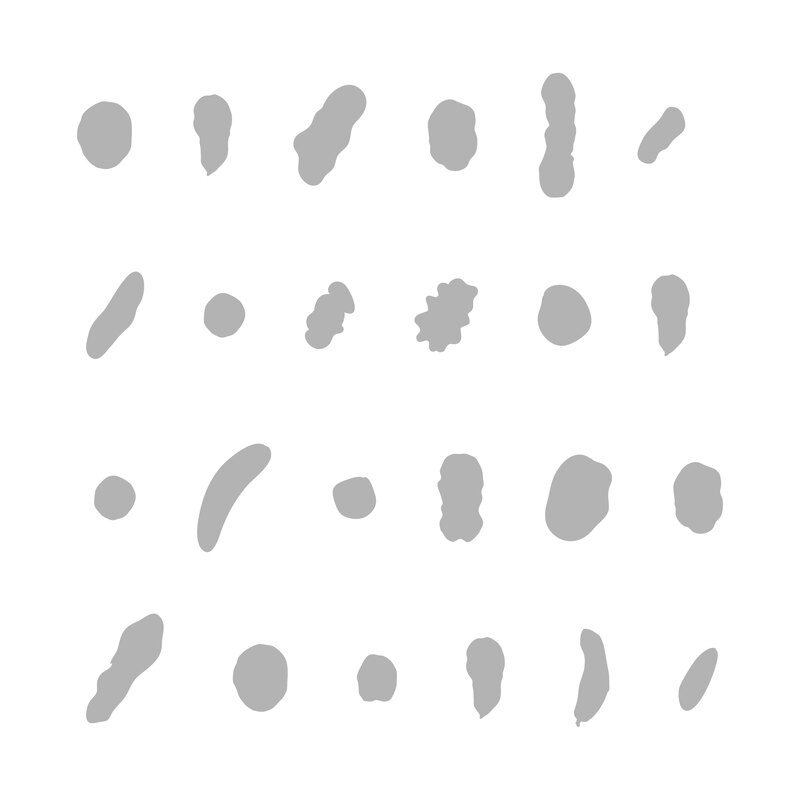
But the potato is still found freed from the fields, still growing in kitchen gardens, still growing in the Andes, still growing wild in the western Americas. Wherever you bury a potato, it will most likely grow. It might need intensive protection, but it might also do just fine. Perhaps bury a couple of different ones, let them a little wild, perhaps leave them to roam.
